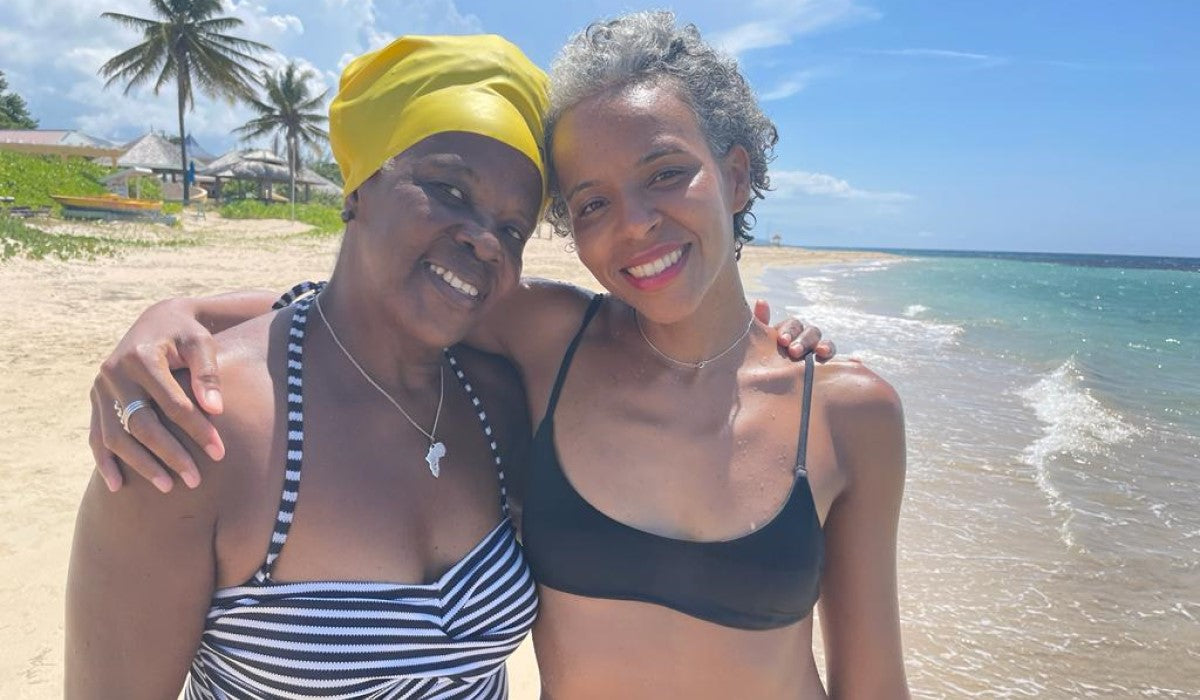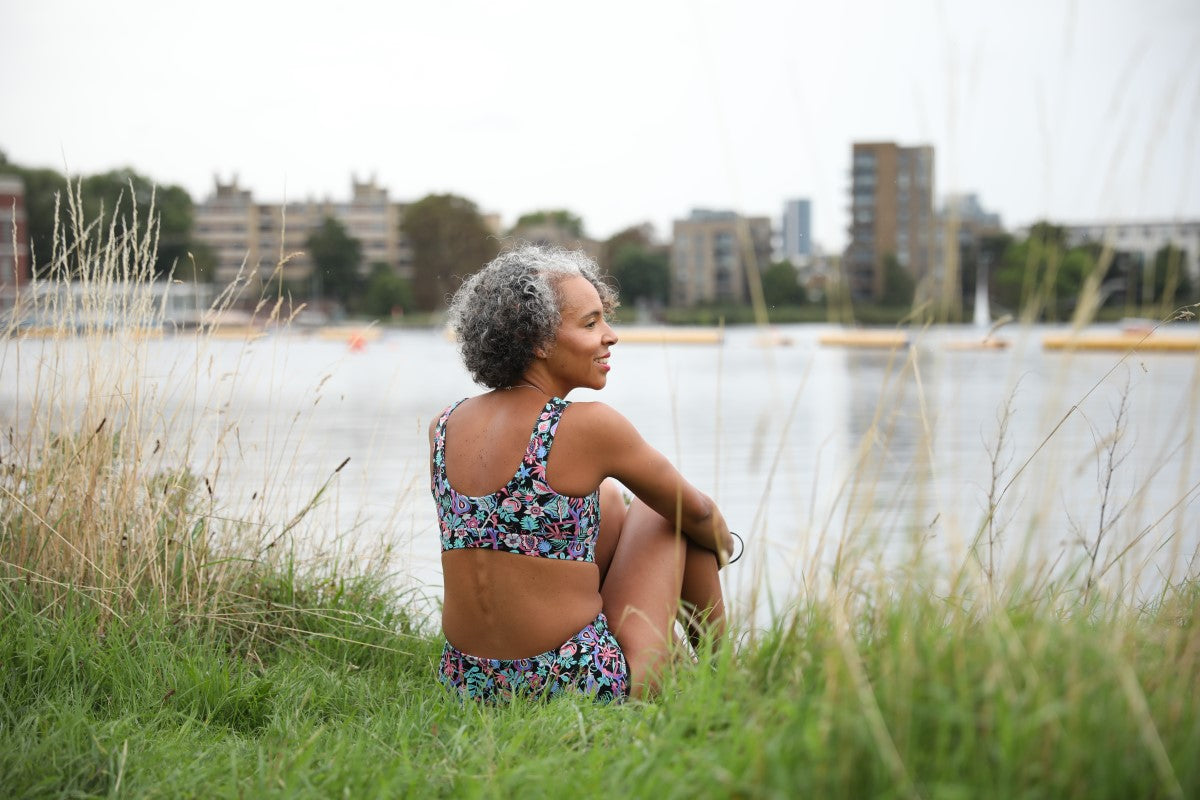Your Bag is Empty
CLOSING DOWN SALE. ALL ITEMS REDUCED AND FINAL SALE.

How can a traumatic near-drowning lead to water confidence? For Black History Month, our guest blogger and Diversity Outdoors model, Abigail Black, shares a beautiful celebration of the water confidence and swimming skills gifted to her by her parents.
After going for a swim on a small beach in Montego Bay, Jamaica, my mum regained consciousness to the frantic screams of her guardian, Mrs Edna Ellis: “He’ll kill me! Her father is going to kill me!”
Coughing and spluttering, my mum shuddered, knowing full well that if her father found out something had gone wrong on her solo Saturday morning swim, Mrs Ellis would be blamed – not his precious first-born child. Terrence Black had sent his daughter all the way from the parish of St Ann to a secondary school in the city of Montego Bay, and it was Mrs Ellis’ job to look after her during term time. If anything happened that jeopardised my mum’s safety or well-being, Mrs Ellis would undoubtedly feel my grandfather’s wrath. Mr Black was fiercely protective of his daughter from the moment she was born. Even if what happened to my mum could not be explained, Mrs Ellis as my mother’s guardian, would have to take full responsibility.

Until today, my mum is still unable to explain how she nearly drowned as a teenager. It is as if the sequence of events leading up to her near demise have been wiped from her memory to protect her brain from the traumatic circumstances of her experience. The memory is a complete blank with no flashbacks to help my mum piece together what happened that morning on the beach in Montego Bay. The confident teenager who got into the water that Saturday morning was scarred by an experience she could not recount and instead, any deep body of water took on a new identity, representing her trauma and evoking fear, panic and worry.
You might be surprised by this, but my water confidence comes from my mother.
She took me for my first cold water dip on a sunny summer’s day in Clissold Park, Stoke Newington’s only toddler’s lido. Wearing a ruby red swimsuit with ruffled straps, my chubby brown legs were rigid with fear. Toes scrunched under my feet, every toe was doing its absolute best to recoil from the splashed cold water occupying the matt white edges of the pool. Overwhelmed by yet another toddler challenge, I focused on the one thing that I understood: my mum.
The sun was shining on all of us that day, but on my mum, the sun glistened.
Worriedly, I assessed my mum as she crouched and balanced on her toes, her thighs immersed in the shallow water as she turned towards me. She reached up, taking my little hands in hers, smiling the most encouraging and loving smile a mother could give a petrified toddler. Alert to my panic, but radiating confidence, my mum’s smile remained steadily on me as she lowered herself gently onto her knees in front of me.
“Come on Abi” my mum encouraged, “You can do it.”
She gently pulled my little hands towards her, hoping that I would take a step closer to her. My arms were stiff with tension so as she pulled, my upper body leaned towards her, but the lower half of my little body remained rooted to the edge of the paddling pool.
Realising her approach would not work, my mum changed tactics, clasped me under my arms and attached me to her right hip as she lifted herself up onto her toes again. Desperately avoiding the cold water, I wrapped my legs around my mum’s waist and clung furiously to her, both bewildered by the sudden change in position and relieved by my mum’s warmth.
“That’s it” my mum soothed as I took in the shimmering blue liquid beneath me, tension slowly easing from my body.
We bobbed.
Acclimating me to the temperature of the water, my mum bobbed us up and down rhythmically, inch by inch taking me belly high into the water. Soothing bobs, never sudden, gentle and consistent, each bob positively reinforced with bright smiles and soothing words of “There you are, we’re swimming.” Each bob assuaged my fears of the unknown chlorinated blue water beneath me, and I relaxed into my mother’s body, her warmth and unconditional love.

On every holiday with my father, he would disappear for long swims whilst my stepmother and I stayed on the shore. I would busy myself patting the sand into sturdy sandcastles (really hills) and each time I looked up, I would not be able to spot my dad in the distance. He had breast stroked his way out far and beyond the bobbing rope to keep the tourists at bay. Eventually he would return, dripping salty droplets onto my sandcastles, totally unfazed by his long-distance swim. Briefly, I would marvel at his prowess and endurance before returning to the determined patting and smoothing of my burgeoning sandcastles.
My mum taught me to enjoy the water, to languor, float and bob in the sea, insisting that the sea is healing and cleanses us spiritually and emotionally. My father taught me swim technique: how to tread water, how to head-up breaststroke and a fearlessness of deep water. Incredibly, my mum did not pass her childhood water trauma onto me, her last-born child. I can honestly say that I did not know that she was afraid to go any further than where she could touch the sand until I was in my teens and by then all the water confidence and swim training had been instilled by both parents.

I am sharing this with you now as an all-year-round outdoor swimmer, a committed “swim fitness class” pool swimmer, a long-distance event swimmer and a life-long learner. I learnt how to front crawl, butterfly, and dive as an adult and I’m still learning. Nothing is perfect and I do not strive for perfection. I want to swim for life and purely for the love of it. For me that is something worthy of celebrating all year round, not just during Black History Month.
When you love something as much as I do, it’s natural to want to share that joy with as many people as possible. My immersion into the swim world quickly showed there was an absence of black and brown swimmers and the reasons behind this are complex (#OurSwimStory).
Generally, in Black History Month (BHM) we acknowledge and celebrate the black and brown people who have come before us, those who broke down barriers, smashed stereotypes and ultimately, inspire us all with their journey and accomplishments. We should do this – not just during BHM – but all year around. After all we should all being trying our best to educate ourselves all year round, and any acknowledgement of the accomplishments and experiences of black and brown people cannot be reduced to a one-month celebration.
Black History is also about bringing to light the figures we don’t necessarily hear about, but have had a major impact on this world, or those who have done something truly remarkable - sometimes against the odds, but often through dedication, selflessness, and a commitment to the progress of others.
I also think that Black History can be personal and a way of acknowledging the heroes in your life – both known to the world and relatively unknown. Black History can be a celebration of the people that have made a difference to your existence and have made you the person you are today. For me, that is Black History in the making.
I would not have the relationship I have with the water without my mother and father and for that, I give thanks. My father still swims and my mother is still building courage to resume swimming lessons.
With gratitude, this article is to share my love of my mother and father who made me the swimmer I am today.
_________________________________________________
